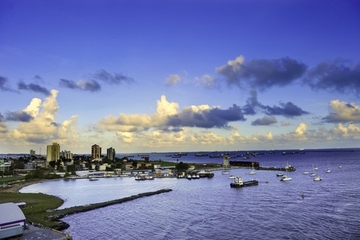
Colon Cruise Port
Colon, Panama was founded in 1850 by Americans working to build the Panama Canal. Not surprisingly, today it is the main jumping off point for those who want to see the Panama Canal in action. It is also home to the world’s first transcontinental railway, and the surrounding area features pristine beaches and a variety of exotic plants and wildlife.
How to Get to ColonCruise ships arrive at one of two ports – Colon 2000 or Cristobal Pier. The best way to travel between the two piers or into Colon from either is by taxi, which are carefully regulated. Drivers may also offer driving tours of the city from the port, the prices of which are set in advance.
One Day in ColonRather than spending the day in Colon, many cruise passengers choose instead to participate in shore excursions arranged by their ships or tours organized independently. One popular option is a guided excursion that takes in Gatun Lake, the Gatun Locks and an Embera Indian village. Another possibility is a day trip on the Isthmian Railway from Colon to Panama City, visiting the Miraflores Locks and returning to Colon by bus. More active travelers may enjoy a kayaking excursion on Gatun Lake, or a journey across the top of the rainforest via the Gamboa Aerial Tram.
If you are looking for a more relaxing day in Colon, you might hire a taxi to take you on a short tour of the city before dropping you off to enjoy some sunshine at Langosta Beach. Or, just spend the day around the port, enjoying the arts and crafts markets, cafes and folk shows at Colon 2000 and Cristobal Pier.
On the other hand, if you want to get out of town, you can arrange an excursion to Portobelo, a nearby colonial town and UNESCO World Heritage Site. There, you can explore the ruins of several Spanish forts, enjoy beautiful sea views and discover the 16th-century Portobelo Treasure House, the holding place for Peruvian gold before it was shipped back to Spain.
Port InformationThe official language in Panama is Spanish. Some people may speak a little English, but it's not likely. The local currency is the Balboa, but US dollars are often accepted. ATM's are available at the port and shops around the port accept credit cards. Both ports offer shopping and café options. Colon 2000 boasts the second largest free trade zone in the world, while Cristobal Pier offers a lively crafts market.
